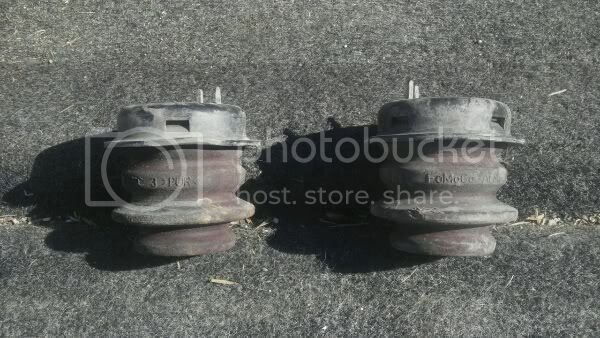Looking forward to hearing how this goes! Is this something you could do in the field or would it be better to hobble home and do it in a shop?
Stating the Raptor's suspension is comparable to other models is a bit of a *reach* if you ask me. I'll agree that Raptors in general will be 1000x more likely to sustain dammage due to its abilities (and marketing) in less than ideal conditions, but things can be just as unpredictable on road as off. Admittedly not as often, but that can make those few and far between instances more dramatic and damaging. Remember a speed bump is the perfect model of what caused "Framegate" 2011. I'm by no means suggesting that every speed bump will bend your frame!

But in the event you don't see it coming at all, how is it any different to hitting something off road? Concrete tends to be less forgiving than the natural stuff to begin with. Another thing to consider is that while off road your tires will be considerably aired down and a lot more forgiving.
Why would a Raptor be more susceptible to frame dammage than a regular F150?
Lets discuss what the goal is when designing a pre-runner style suspension setup. #1 Goal? Achieve as much
usable travel as possible, right? How does one make travel more usable?
An overall softer spring and shock setup. Not anything like the ones you will find on a run of the mill F150 ready to haul over 10k lbs (as I'm sure we are all well aware). Another way to view this acquired "softness" is axle freedom. This freedom is well received when trying to keep the tires in contact with the ground at speed over uneven terrain, but with freedom comes responsibility. The axle now has the ability to cary a lot more speed/inertia/force into anything in its path. In our case, that path is abruptly halted by some arguably underwhelming (given current tech) rubber knobs bolted directly to the bottom of the strongest available frame on a full size truck. Though its worth noting that the hole the created to acces said bump stop is not doing it any favors. We can sit here and debate the reasons why Ford decided to go this rote, but I'm not interested in doing that here and that conversation has already happend in other threads. What I'm more interested in, is just how sensitive is it? I'm not worried I'm going to "fail" my truck on a speed bump, but given the design I wouldn't be at all surprised if some tweaking could occur with not a lot of effort.
I'm no engineer, nor do I claim to be. This is 100% speculation and logic (or thats how its arranged in my head anyway). In reguards to your comment saying that a Raptor is as likely to bend its frame as a standard F150, a good test would be to take a standard F150 and see the maximum speed it can travel over a given speed bump before bottoming out the rear bump stops. Then do the same thing with a Raptor Scab and Screw. I know the factory Foxes are suppose to be progressive to an extent, I wonder how effective that is at the standard ride height in an urban setting? Anyone know the percentages for up vs down travel? They work beautifully when fully extended after flight, but when 1/2 to 3/4 of the travel isn't coming into play, it can be a completely different ball game. Another good test would be to throw a few hundred pounds in the bed and see what happens again. Nothing that wouldn't be out of the ordinary when hitting the dusty trail for a couple days.
For all the fanboys out there I am not in any way attacking Ford, or its engineers.

I am only trying to understand/explore the limits of a vehicle that is new to me that I have come to adore. Any step closer we come to finding that magical line where we go from under to "over driving" is good for the entire community if you ask me...


 But in the event you don't see it coming at all, how is it any different to hitting something off road? Concrete tends to be less forgiving than the natural stuff to begin with. Another thing to consider is that while off road your tires will be considerably aired down and a lot more forgiving.
But in the event you don't see it coming at all, how is it any different to hitting something off road? Concrete tends to be less forgiving than the natural stuff to begin with. Another thing to consider is that while off road your tires will be considerably aired down and a lot more forgiving. I am only trying to understand/explore the limits of a vehicle that is new to me that I have come to adore. Any step closer we come to finding that magical line where we go from under to "over driving" is good for the entire community if you ask me...
I am only trying to understand/explore the limits of a vehicle that is new to me that I have come to adore. Any step closer we come to finding that magical line where we go from under to "over driving" is good for the entire community if you ask me...
